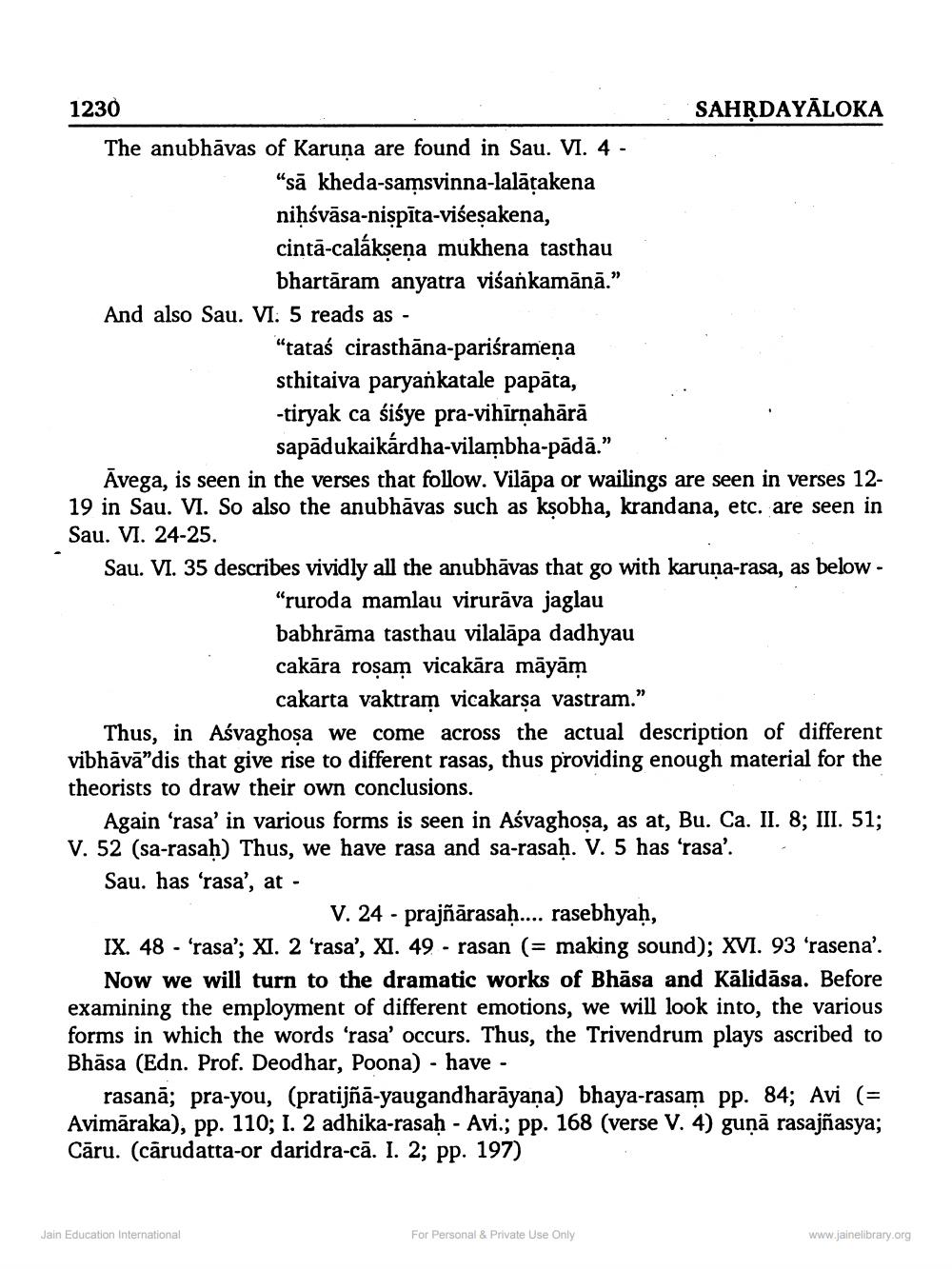________________
1230
The anubhavas of Karuna are found in Sau. VI. 4 - "sā kheda-samsvinna-lalāṭakena niḥśvāsa-nispīta-viśeṣakena,
cinta-calákṣeņa mukhena tasthau bhartāram anyatra viśankamānā."
And also Sau. VI. 5 reads as -
"tataś cirasthana-pariśrameņa sthitaiva paryankatale papāta, -tiryak ca śiśye pra-vihīrṇahārā sapādukaikárdha-vilambha-pādā.”
Āvega, is seen in the verses that follow. Vilapa or wailings are seen in verses 1219 in Sau. VI. So also the anubhavas such as kṣobha, krandana, etc. are seen in Sau. VI. 24-25.
SAHṚDAYĀLOKA
Sau. VI. 35 describes vividly all the anubhavas that go with karuna-rasa, as below -
"ruroda mamlau virurāva jaglau
babhrāma tasthau vilalapa dadhyau cakāra rosam vicakāra māyām
cakarta vaktram vicakarṣa vastram."
Thus, in Asvaghosa we come across the actual description of different vibhāvā"dis that give rise to different rasas, thus providing enough material for the theorists to draw their own conclusions.
Again 'rasa' in various forms is seen in Asvaghosa, as at, Bu. Ca. II. 8; III. 51; V. 52 (sa-rasaḥ) Thus, we have rasa and sa-rasah. V. 5 has 'rasa'.
Sau. has 'rasa', at -
V. 24 - prajñārasaḥ.... rasebhyaḥ,
IX. 48 - 'rasa'; XI. 2 'rasa', XI. 49 rasan (= making sound); XVI. 93 'rasena'.
Now we will turn to the dramatic works of Bhasa and Kalidasa. Before examining the employment of different emotions, we will look into, the various forms in which the words 'rasa' occurs. Thus, the Trivendrum plays ascribed to Bhasa (Edn. Prof. Deodhar, Poona) - have -
Jain Education International
rasanā; pra-you, (pratijñā-yaugandharāyaṇa) bhaya-rasam pp. 84; Avi (= Avimāraka), pp. 110; I. 2 adhika-rasaḥ - Avi.; pp. 168 (verse V. 4) guņā rasajñasya; Caru. (carudatta-or daridra-că. I. 2; pp. 197)
For Personal & Private Use Only
www.jainelibrary.org




